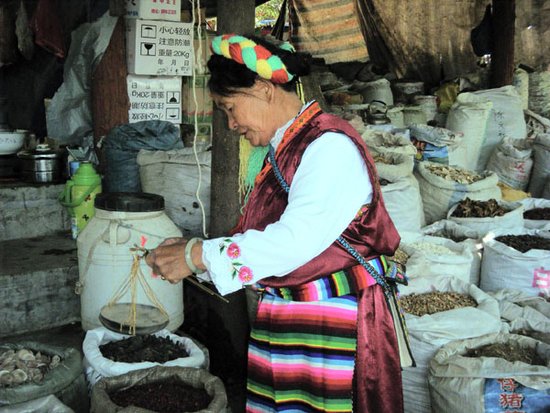| Home > China Feature |
Tibetan Medicine
With a history of over 2300 years, Tibetan medicine is a medical system featuring complete theoretical system, unique curing methods, and strong ethnic flavor. It is formed by virtue of long-term practice as well as continuous accumulation and perfection in this regard by the Tibetans. Having developed for over 2000 years, Tibetan medicine has absorbed theoretical primes of ancient Chinese medicine as well as medicine of Tianzhu (India) and Dashi (present Iran and Arabia) on the basis of summarizing Zang people’s experience in medication. It is presently the second major traditional medicine, following traditional Chinese medicine. In 8 A.D., Yutuoningma • Yundangongbu, a famous Tibetan doctor, wrote a world-famous pharmacopeia of Tibetan medicine — Four Medical Tantras, thus symbolizing the completion of Tibetan medial system with unique features. Tibetan medicine was divided into southern and northern schools in 14 A.D. Both the “Mercury Baptizing Method” and “Renqingchangjue Compatibility Feat” applied by the northern school in Lhasa are medicine processing skills of distinctive features. In contrast, the southern school taking Kangba as the center is characterized by aptness at using and distinguishing herbal medicine while inheriting the essence of Tibetan medicine.

Art
 more
moreChina Beijing International Diet ...
Recently, The hit CCTV documentary, A Bite of China, shown at 10:40 ...

Exhibition of Ancient Chinese Jad...
At least 8,000 years ago, Chinese ancestors discovered a beautiful...

Longmen Grottoes
The Longmen Grottoes, located near Luoyang, Henan Province, are a tr...

Custom
 more
moreWeb Dictionary
Martial Arts
Tai Chi Master Class Held in Moscow
MOSCOW, June 15, 2016 (Xinhua) -- Students learn from Shaolin ...
Celebriting 70 years' efforts in restoring Mogao...
Work is being carried out at the restoration site of cave No 98 a...
Hong Kong Children's Symphony performs in Seattle
Under the theme of Tribute to the Golden Age, a concert featuring a ...





 print
print  email
email  Favorite
Favorite  Transtlate
Transtlate 








